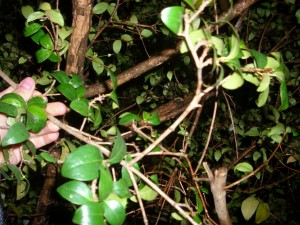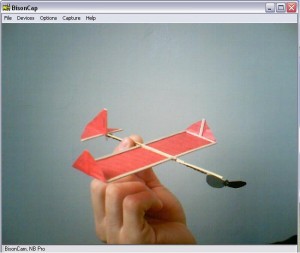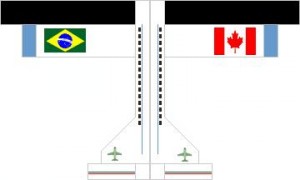Make Magazine featured the Squirrel Model Airplane recently. Gareth Branwyn posted a couple of videos of flying and making it.
He featured this six minute building video.
Make Magazine featured the Squirrel Model Airplane recently. Gareth Branwyn posted a couple of videos of flying and making it.
He featured this six minute building video.
Here are a few more videos from today’s flying session. We had a great time with a bunch of kids. I think we will have a larger group of kids for our next outing! I’ve offered to help the kids with repairs and any building so will be looking forward to that.
(2009-07-30)
It looks like Eduardo has made great progress. As I went through the pictures, I was going to suggest he find a bigger place to fly, and he did.
Paulownia is another wood that is light, almost as light as balsa. It is widely available in the Orient. A tree of wider distribution is cottonwood. The roots are soft and light, similar to balsa, but very porous. Unfortunately also somewhat brittle.
His first prop was not spinning very freely. Prop bearings can be made of metal tube or coiled wire. Ball point pens are a good source of metal and plastic tube. Metal washers can be used, or glass beads, or solid plastic from food cartons. Cardboard saturated with varnish or similar material will hold its shape better.
The prop shaft must make a slight angle to the wing, 3 to 5 degrees. I set the wing position by glide testing with the motor on, doubled over if possible, but no turns, and moving the wing until it makes a slow, steady descent. Usually that works, but the Squirrel zoomed and the wing had to be moved backwards.
My Squirrel weighed 5.9 grams and I estimated it would fly with a 20″ loop of 1/16″ rubber. I must have given the 20″ motor to one of the kids and not replaced it. I flew it with 1,600 turns on a 14″ motor and it did 1:02 in the Gym, after zooming and hitting the floor a couple times and having the wing moved back. It will do better after some tuning.
Gary Hinze
 I would like to introduce my new friend Eduardo who lives in Brazil. He discovered the Squirrel through the internet and has taken interest in making one.
I would like to introduce my new friend Eduardo who lives in Brazil. He discovered the Squirrel through the internet and has taken interest in making one.
He downloaded the free instructions and went through the video instructions but the materials required were not available locally.


He’s quite resourceful and started to experiment with what he had.
Pictured at the left are some fruit trees which are in his neighborhood.
He used twigs from this tree in order to perform a few experiments.
Here are a few shots of his first experiments using the twigs, tissue paper and a propeller from a toy.
As you can see in the videos it is already looking promising. He also experimented with some foam and other materials. Based on the videos I sent him some suggestions. I figured that the wing needed to be moved back to get the balance right. You will notice that the plane noses up and drops at the end of the test. Also, there the propeller causes drag so needs to be wound up a bit for test flying.
He made a “Mini Squirrel” that was even smaller (pictured below).
I didn’t get any video of the Mini Squirrel but he sent me more of his experiments which included printed paper gliders and a commercial snap together toy.





I believe he used the material in from the snap together toy to make a Squirrel.After a lot of experimentation Eduardo found better materials and got his first great flights. I was pretty thrilled to recieve the email after he got some good flights!
“Thank you! You do not know how happy I was when I made it fly. All the neighbors out to see the Squirrel.”
Eduardo has figured it out and has a Squirrel that is flying well as you can see from the pictures and video collage below.
Brazil is an amazing place that I’d love to visit someday.



I’ve created an alternate design for the winglets that make it easy to carry your Squirrel with you in a small box. I call it the “Briefcase Squirrel”.

 Here are a few details on how to make it and how it works. The winglets are attached by a small elastic band such as the ones women use for their hair (often found in dollar stores). It allows the winglet to spring up and down.
Here are a few details on how to make it and how it works. The winglets are attached by a small elastic band such as the ones women use for their hair (often found in dollar stores). It allows the winglet to spring up and down.
If you can’t easily find small elastics here is a way of making them:
Here are some shots of the prototype.